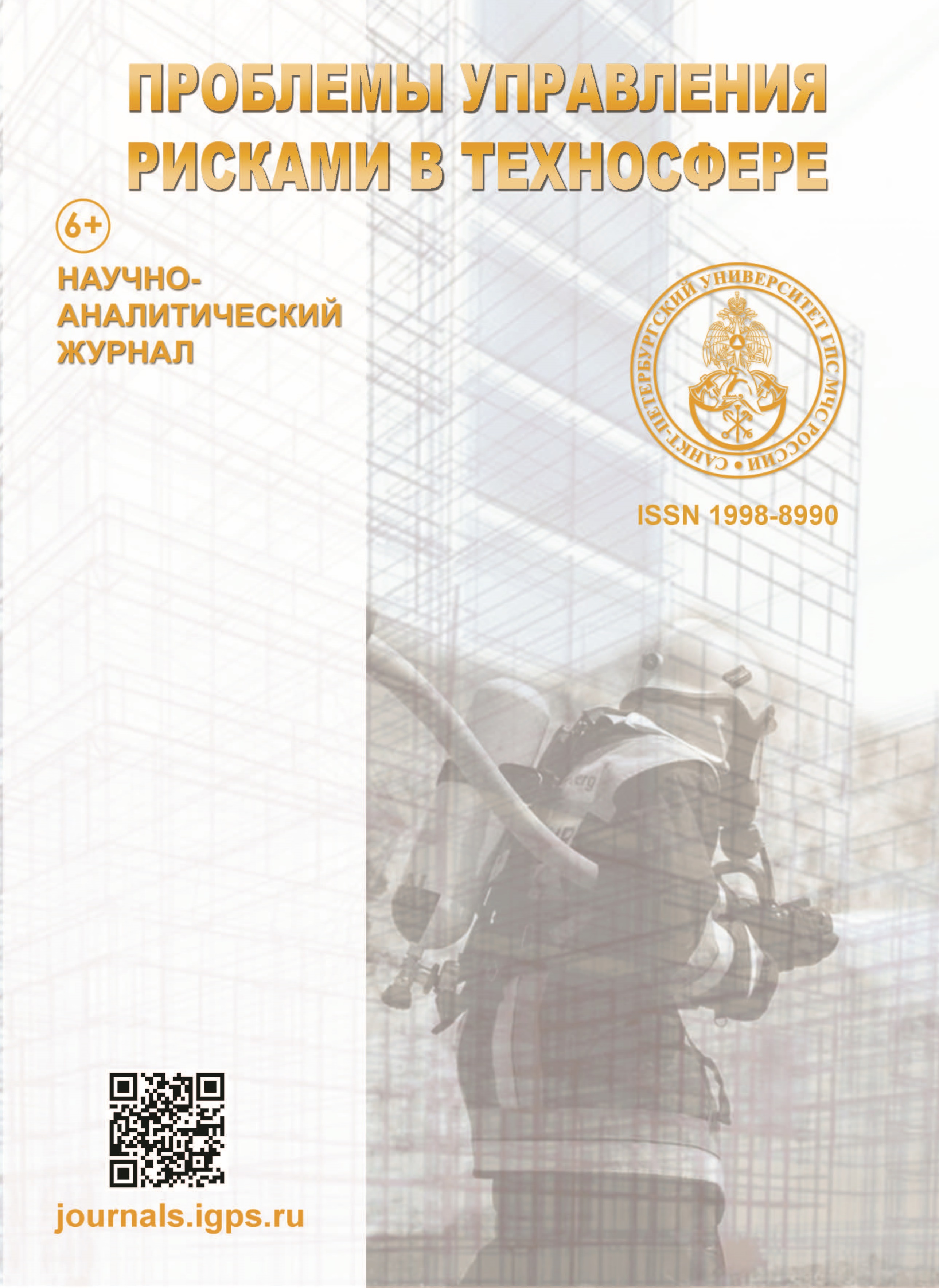Russian Federation
The article discusses the operation of a hydrogen refueling station. Measures to ensure the fire safety of the specified object of protection are proposed. A comparison of a hydrogen filling station and an automotive gas filling station is carried out in terms of design features, fire safety, as well as the operation of facilities. Special attention is paid to the storage of hydrogen, as well as ensuring the safety of the object of protection. The process of refueling vehicles is considered, and methods of protection against explosive and fire-hazardous situations are proposed using the example of the design features of the construction and work of employees of a hydrogen filling station. The economic effect of measures to reduce the fire hazard of hydrogen filling stations is analyzed.
hydrogen, hydrocarbon gas, filling station, design features, fire safety, economic effect
1. Solodova N.L., Minigulov R.R., Emel'yanycheva E.A. Vodorod kak perspektivnyj energonositel'. Sovremennye metody polucheniya vodoroda // Vestnik Kazanskogo tekhnologicheskogo universiteta. 2015. T. 18. № 3. S. 137.
2. A review of hydrogen storage and transport technologies / Yang Miao [et al.] // Clean Energy. 2023. № 7. P. 190–216. DOI:https://doi.org/10.1093/ce/zkad021.
3. European hydrogen backbone: technical report / Rik van Rossum [et al.] // European Hydrogen Backbone. 2022. URL: hhttps://ehb.eu/files/downloads/ehb-report-220428-17h00-interactive-1.pdf (data obrashcheniya: 20.10.2024);
4. Genovese M., Fragiacomo P. Hydrogen refueling station: Overview of the technological status and research enhancement // Journal of Energy Storage. 2023. Vol. 61. P. 106758. DOI:https://doi.org/10.1016/j.est.2023.106758.
5. Current standards and configurations for the permitting and operation of hydrogen refueling stations / M. Genovese [et al.] // International Journal of Hydrogen Energy. 2023. Vol. 48. Iss. 51. P. 19357–19371. DOI:https://doi.org/10.1016/j.ijhydene.2023.01.324.
6. Fomin A.V., Egorov A.A., Borisova V.A. Obespechenie pozharnoj bezopasnosti vodorodnyh zapravochnyh stancij // Vestnik Universiteta grazhdanskoj zashchity MCHS Belarusi. 2022. T. 6. № 3. S. 305–311.
7. Shebeko Yu.N. Pozharnaya bezopasnost' vodorodnyh avtozapravochnyh stancij // Pozharovzryvobezopasnost'. 2020. T. 29. № 4. S. 42–50.
8. Gordienko D.M., Shebeko Yu.N. Pozharnaya bezopasnost' ob"ektov infrastruktury transporta na vodorodnom toplive // Pozharovzryvobezopasnost'. 2022. T. 31. № 2. S. 41–51.
9. Egorov A.A., Fomin A.V. Sravnitel'nyj analiz vodorodnyh zapravochnyh stancij i avtomobil'nyh gazovyh zapravochnyh stancij // Aktual'nye problemy pozharnoj bezopasnosti: materialy XXXIV Mezhdunar. nauch.-prakt. konf., posvyashch. 85-letiyu obrazovaniya. M.: VNIIPO MCHS Rossii, 2022. S. 708–713.
10. Shvyrkov S.A., Vorob'ev V.V., Ibatulin R.K. Ocenka pozharnogo riska dlya avtomobil'noj gazozapravochnoj stancii ot raspolozhennyh vblizi avtomagistrali ochistnyh sooruzhenij // Tekhnologii tekhnosfernoj bezopasnosti. 2015. № 4 (62). S. 64–73.







